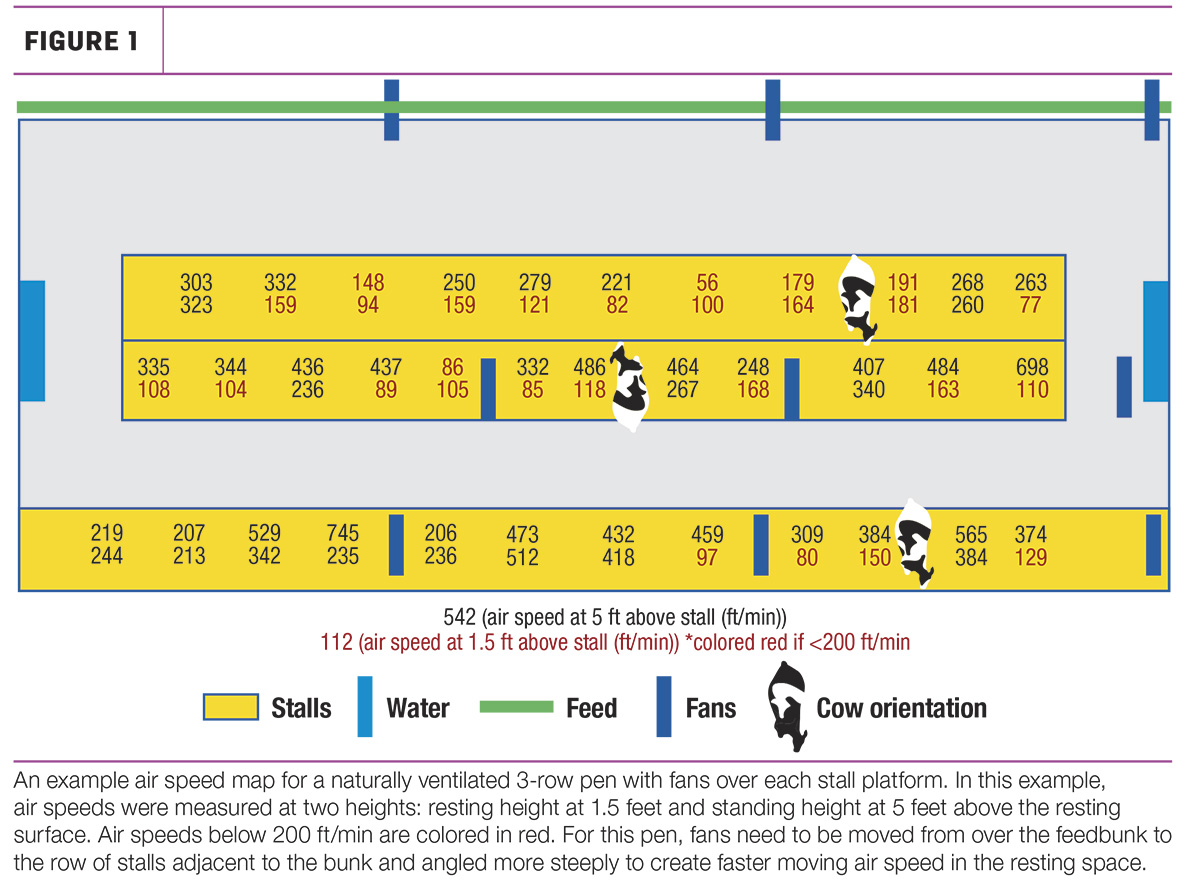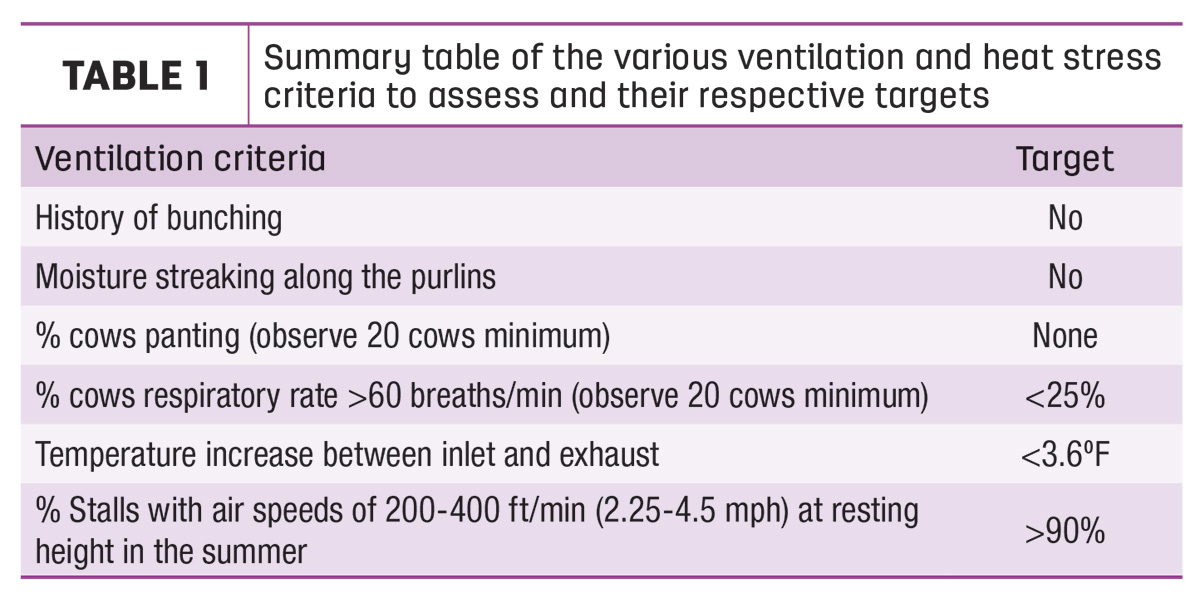With so many different approaches to ventilating adult cow barns – from natural to mechanical systems, from negative pressure tunnels and cross-vents to positive pressure hybrid systems – how do you actually know if it works?
One approach is to ask the cow – or at least examine her response to climate challenges. Within our record systems, we can look for an increase in pneumonia events in the winter, mastitis in the summer and lameness in the fall. We can look for precipitous drops in daily milk yield following heat stress spikes in the summer and a decrease in conception rate and an increase in somatic cell count. These changes may reflect environmental challenges instigated by fluctuations in the climate that are not being handled well enough by the ventilation system.
We can also look at the cows directly as we walk the barns. In the summer, is there bunching behavior where cows congregate in the middle of the barn away from the bright light coming in from the side and end walls in the afternoon? Are cows panting or showing signs of an elevated respiratory rate? If more than 25% of a group of cows (measure a minimum of 20 cows whether standing or lying down) has an elevated breathing rate greater than 60 breaths per minute, this indicates that a significant proportion of the cows are experiencing heat stress and that the ventilation and cooling systems are failing and require further testing.
A detailed examination of ventilation design will involve calculation of fan capacity, air changes per hour, air exchange per animal, measurement of static pressures, and sophisticated machines that can be used to measure precise levels of noxious gases such as ammonia. However, this type of examination often involves the use of expensive specialist equipment – and it is not as easy as you think to find the fan capacity rating of a fan; often fan labels are placed in the most inaccessible and dangerous places to read.
Over the past couple of years, we have focused on the use of more readily available, reasonably priced equipment to audit ventilation system effectiveness with a focus on summer performance. We have worked with Kestrel Instruments to utilize some of the devices they have developed to monitor temperature, humidity and air speed and have utilized a portable propane bug killer filled with mineral oil to fog the barn to visualize airflow.
How to assess ventilation on-farm
Walk the barn and look for issues with fan placement, staging and maintenance, and inlet design and location. Don’t forget to look up at the ceiling and check for cobwebs and moisture streaking along the purlins, which can indicate poor airflow and condensation issues.
At the beginning of ventilation assessment, temperature and humidity recorders can be placed in the cow pen for a naturally ventilated barn, or at the inlet and the exhaust in a mechanically ventilated barn. The devices should be set to record measurements every five minutes during the duration of the visit – typically for about two hours. Effective ventilation design recommendations dictate that we should see no more than a 3.6°F increase in temperature between the inlet and the exhaust of a mechanically ventilated barn.
Next, fog sections of the barn to examine airflow between recirculation fans in a naturally ventilated barn, and around inlets and baffles in a mechanically ventilated barn – so that you can see how the air is distributed and identify dead spots with poor airflow.
Finally, set about mapping air speeds in the resting areas of the pens – taking air speed measurements at resting height, 1.5 feet above the bedded surface, using a vane anemometer with a logging function fitted to a tripod.
We follow different patterns to mapping air speed depending on the design of the barn and the ventilation system used, taking measurements for one minute in each location. This is the most time-consuming part of the assessment and can take one or two hours to do thoroughly. At the end of the visit, we can construct an air speed map of the resting areas of the barn and demonstrate where improvements to airflow are required (Figure 1). This may mean alterations to inlet placement, fan location, angle and spacing, and changes in the location of baffles.

We continually hear about barns being designed with 5-8 mph cross-sectional air speeds. The problem with that recommendation is that it fails to take into account that the air is not distributed evenly throughout the cross-sectional area of the barn – it will always follow the path of least resistance, above and around the cows. While the airspeeds in the alleys and feed lanes may be ample, we measure much lower airspeeds in the space occupied by the cows – which is much more important. Hence, the stall microenvironment is the area we focus on in our ventilation assessment. We require a minimum cooling air speed (MCAS) of 200-400 feet per minute (2.25-4.5 mph) measured at 1.5 feet above the bedded surface for more than 90% of the resting area to make sure that we keep cows resting in the summer.
Overall, this audit provides an objective way to assess whether or not a ventilation system is doing what it was designed to do (Table 1), and it can help direct improvements to critical areas that will enhance dairy cow well-being.







